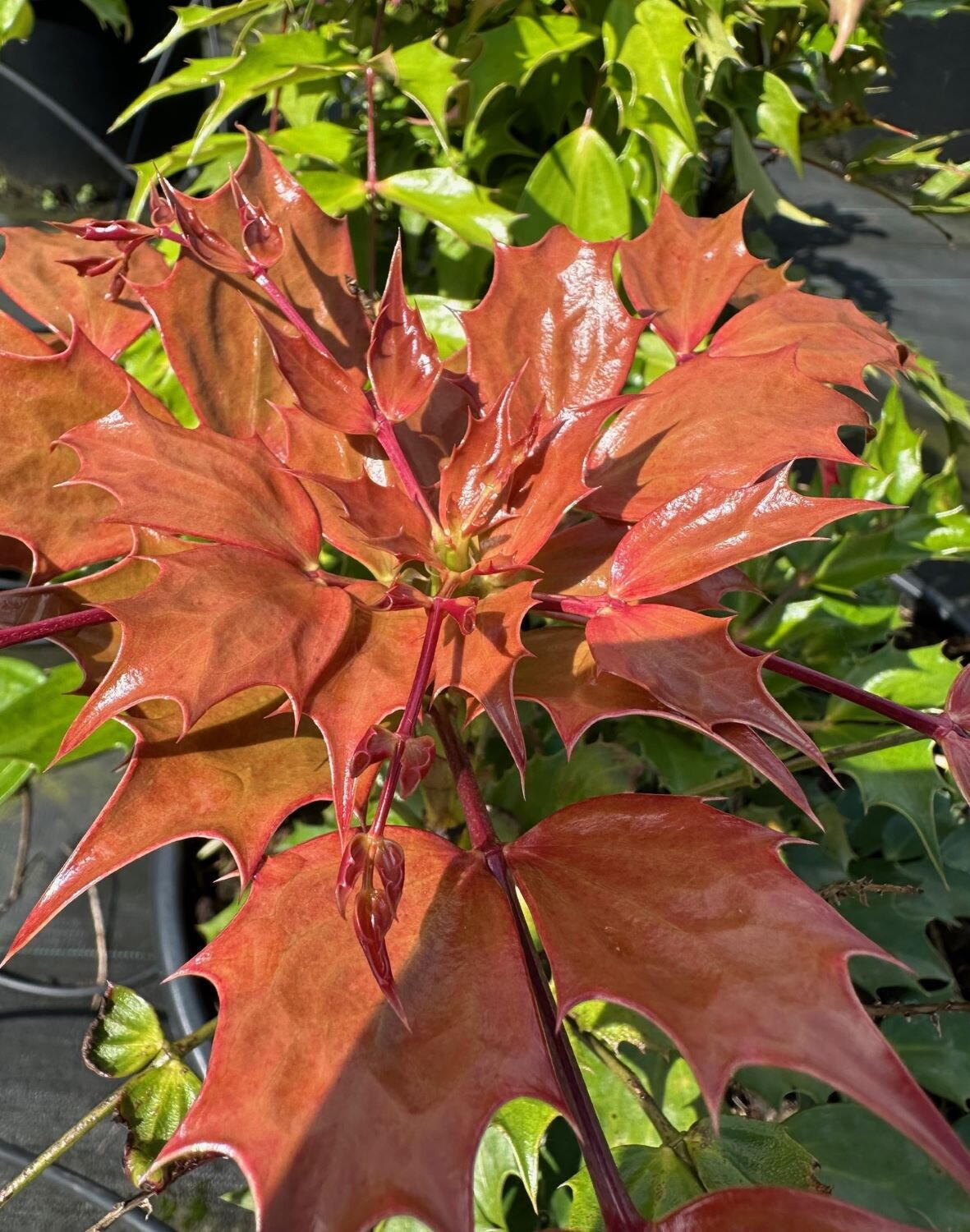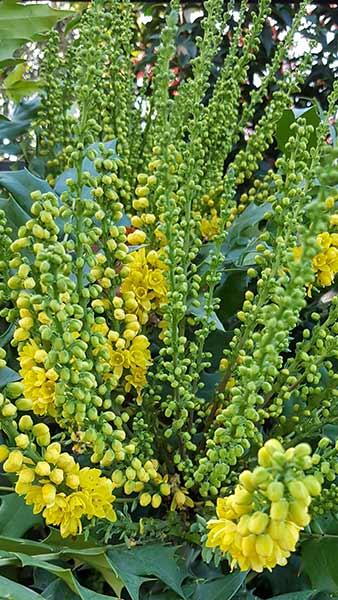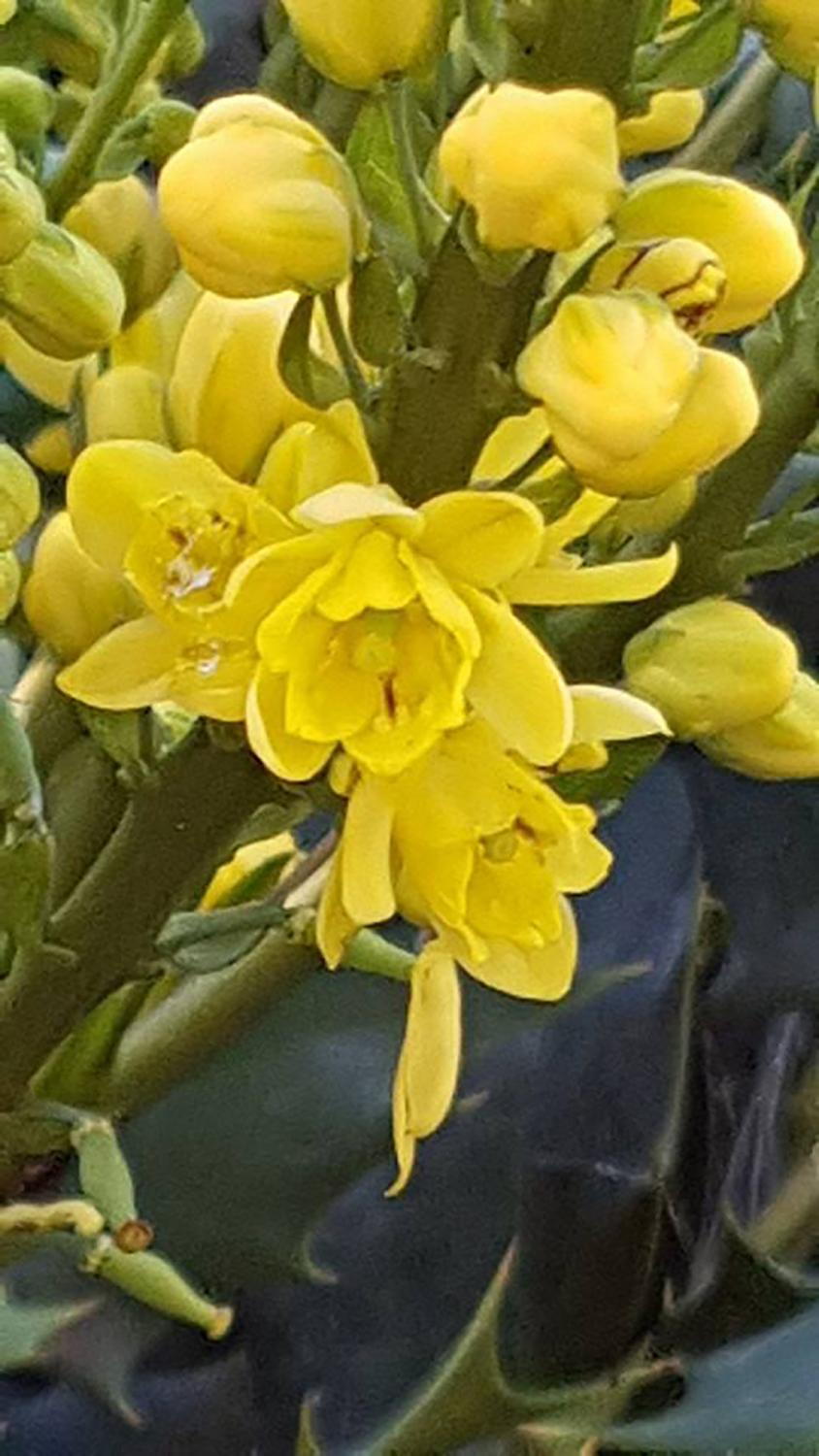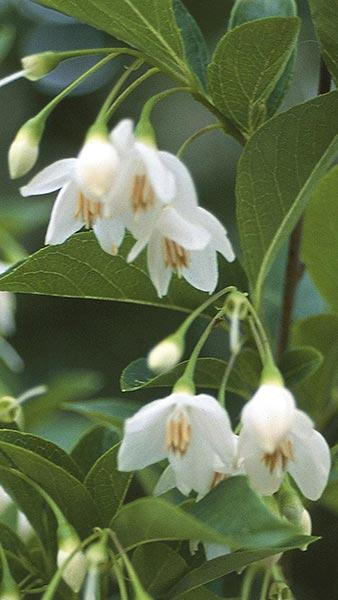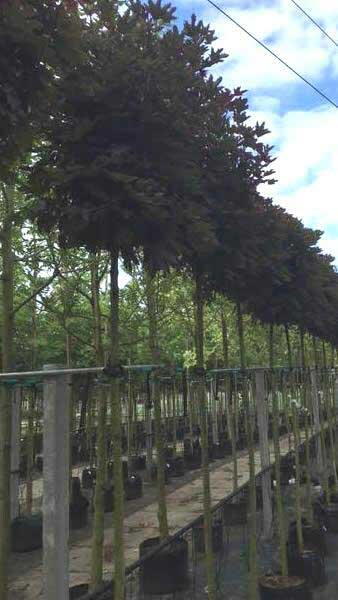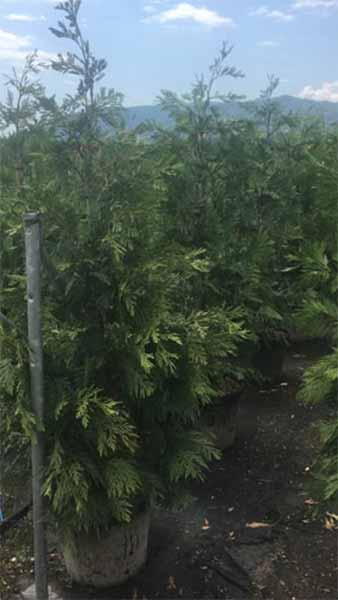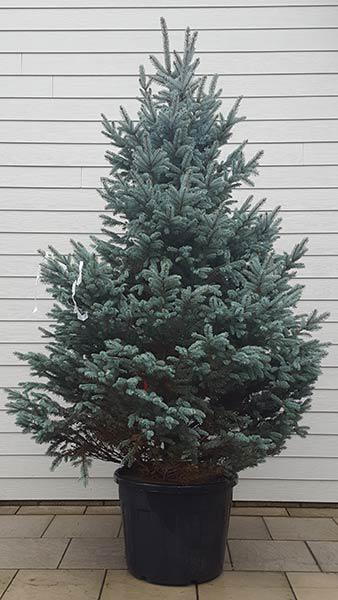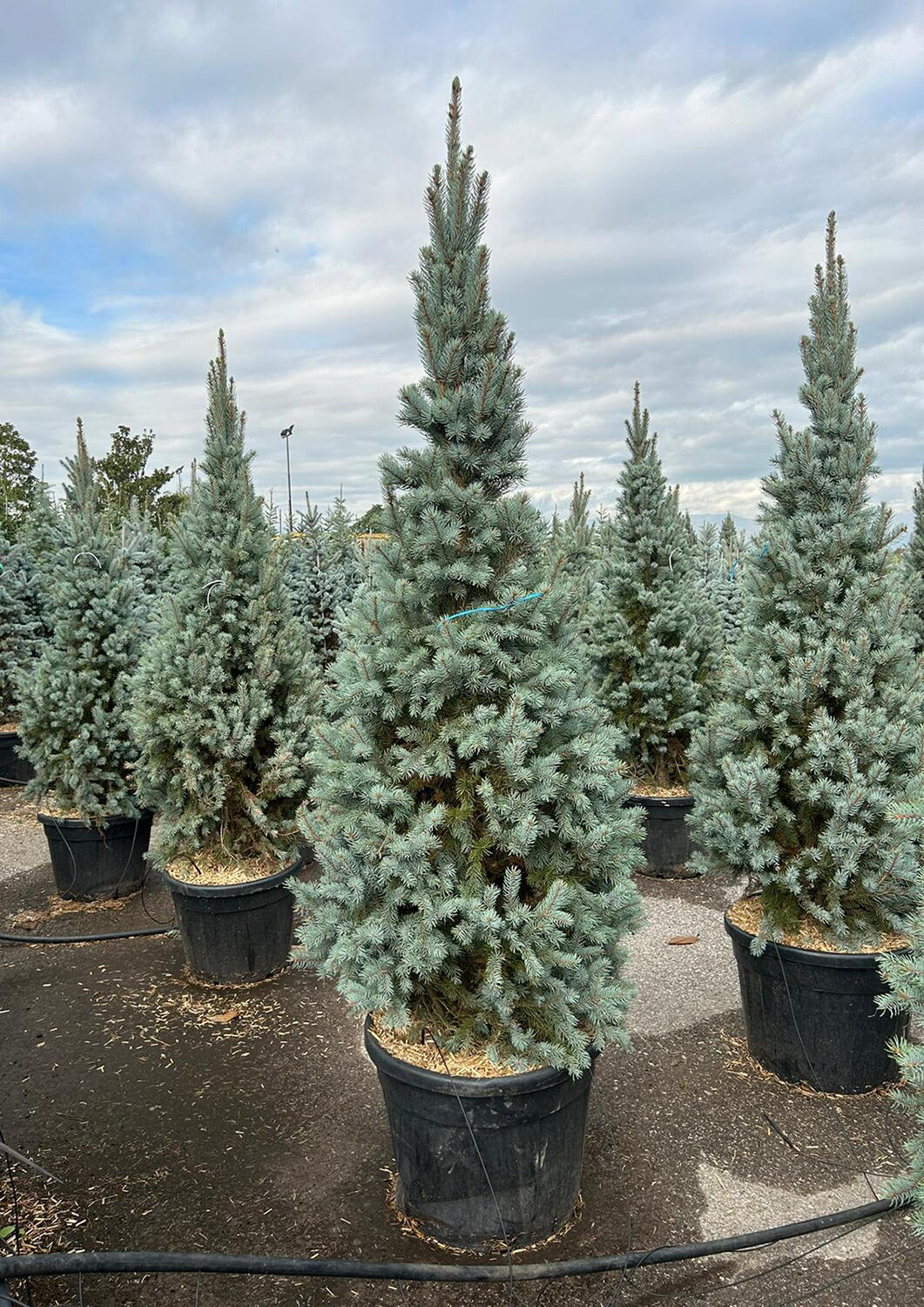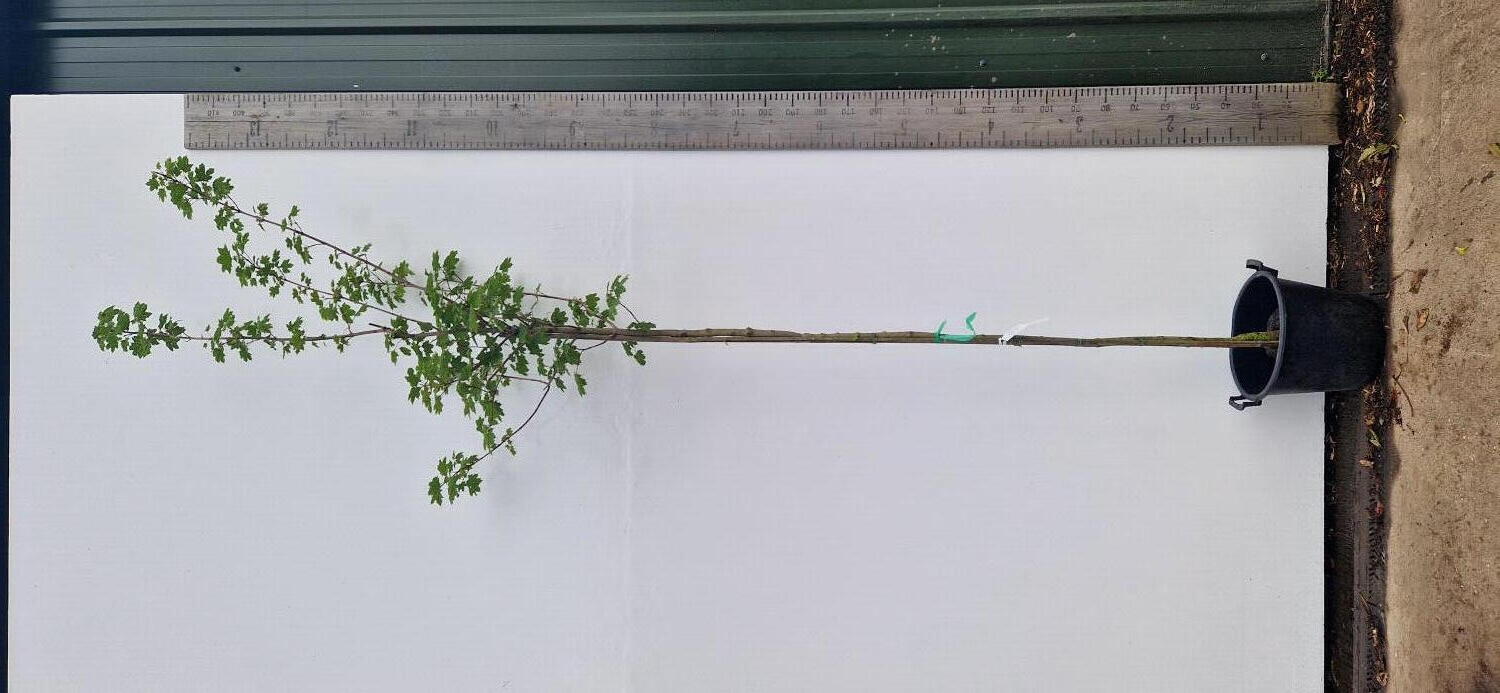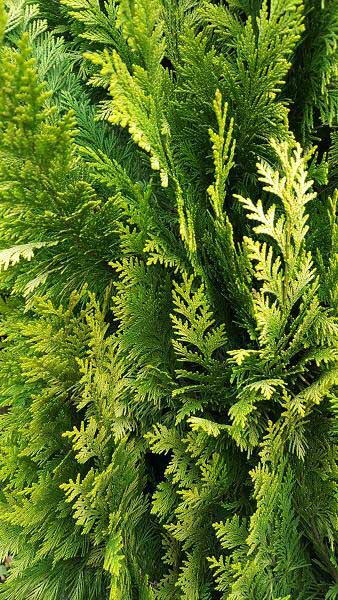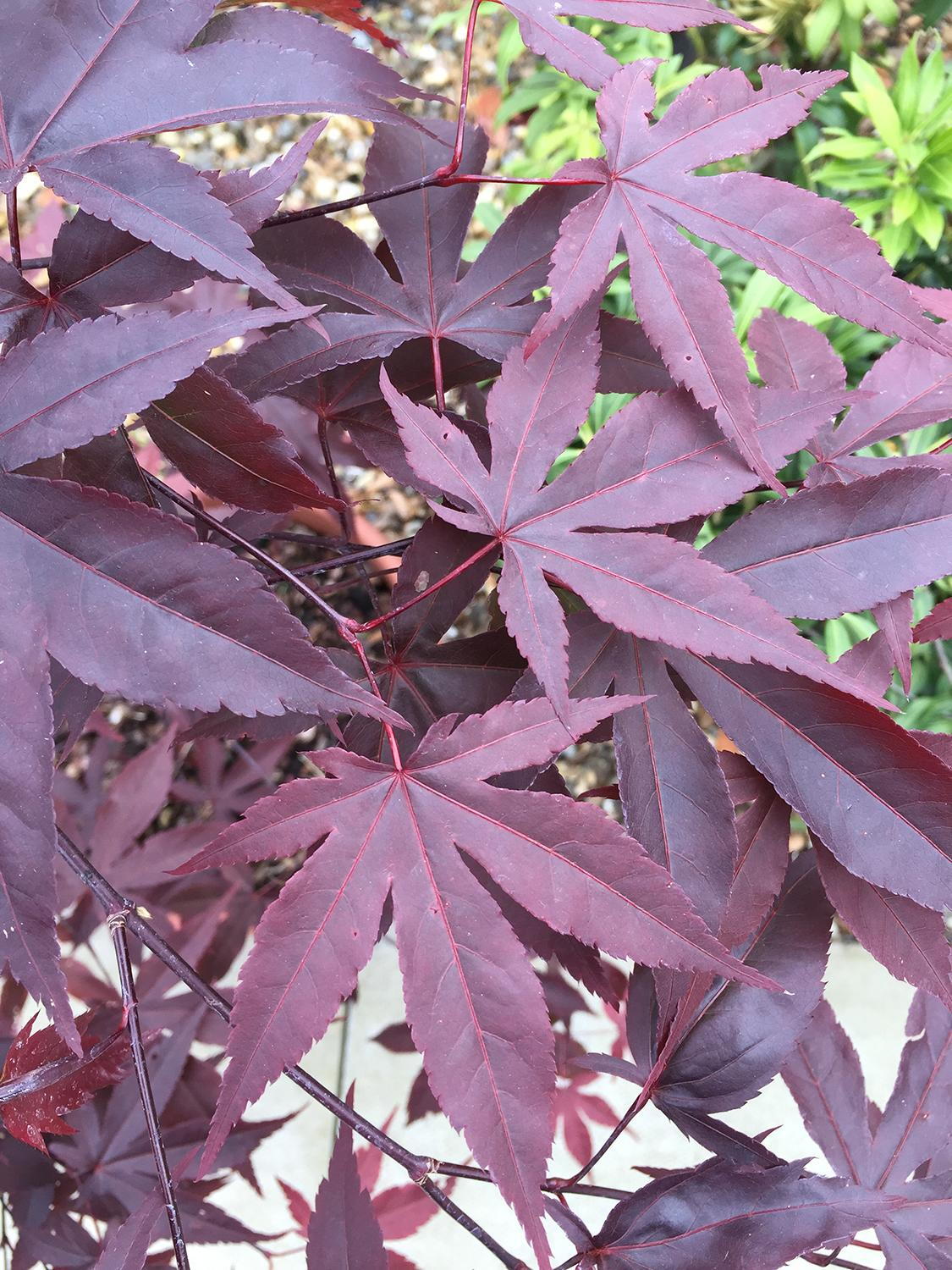Mahonia Nitens Cabaret Oregon Grape Winter Flowering Shrub
Mahonia Nitens Cabaret, also known as Mahonia Cabaret or Oregon Grape Cabaret, is a compact, upright evergreen shrub prized for its vivid seasonal displays, striking architectural form, and wildlife-friendly credentials. Holding both the RHS Award of Garden Merit and the RHS Perfect for Pollinators badge, this low-maintenance shrub offers lasting visual interest from late summer through winter, while supporting biodiversity in your garden. Its distinctive colouration and manageable size make it an excellent choice for modern gardens, small spaces, and mixed borders alike.A standout member of the Mahonia family, Mahonia Nitens Cabaret forms a neat, upright clump of glossy, deep green foliage. Each leaf is attractively spined (similar to holly) and arranged in pinnate formation, creating bold texture and structure year-round. Unlike larger, more imposing Mahonia varieties such as Winter Sun or Charity, Cabaret is noted for its refined habit and tidy appearance.The real show begins in late summer when clusters of rich orange-red buds emerge, gradually opening into bright yellow, lightly scented flowers that continue to bloom well into autumn. The contrasting colours of burnt orange against golden yellow make this variety particularly eye-catching. After flowering, the plant produces attractive blue-grey berries that persist into winter, providing seasonal interest and a food source for birds.Compared to other well-known varieties like Mahonia Media Charity, which can grow quite tall with a more imposing spread. Or the finely textured Mahonia Eurybracteata Soft Caress, Mahonia Nitens Cabaret strikes a balance between showy flower power and compact form. Its smaller stature and refined shape make it especially suited to urban or courtyard gardens, where space is at a premium.Height and Width of Mahonia Nitens Cabaret:At maturity, Mahonia Nitens Cabaret typically reaches a height of 1.2 to 1.5 metres with a spread of around 1 metre. Its upright, clumping habit means it won’t outgrow its space, making it a reliable choice for smaller gardens or tight planting schemes.How Hardy is Mahonia Cabaret?Hardy to H5 (-15°C to -10°C), Mahonia Nitens Cabaret is well-suited to gardens across much of the UK and Ireland. It performs best in a sheltered position and can tolerate a range of soil types, provided they are free-draining. Once established, it is moderately drought tolerant and resilient to urban pollution.Uses in Garden and Landscape:Thanks to its bold foliage, vibrant flowers, and compact size, Mahonia Cabaret is ideal for use in mixed borders, shrub groupings, or as a specimen plant in smaller gardens. Its late-season colour makes it an excellent complement to autumn perennials and ornamental grasses. Plant it near seating areas or paths to enjoy its scented blooms and to attract bees, hoverflies, and birds.It’s also well-suited to plant containers, making it a versatile choice for patios and balconies. For a low-maintenance yet dynamic planting scheme, combine with shade-loving companions such as Heuchera, Ferns, and HelleboresCare TipsSoil: Prefers moist but well-drained soil. Will tolerate clay, loam, or sandy soils.Light: Thrives in partial shade, but will also grow in full sun in cooler areas.Pruning: Little pruning required. Trim after flowering if shaping is desired.Feeding: Mulch annually in spring with organic compost or well-rotted manure.Positioning: Best in a sheltered spot, away from cold drying winds.Originating from China, Mahonia Nitens is lesser-known than some of its larger cousins, but it delivers a vibrant, more compact alternative that doesn’t compromise on performance or visual impact. If you're looking for a year-round evergreen with true seasonal flair, Mahonia Cabaret is an inspired choice.
